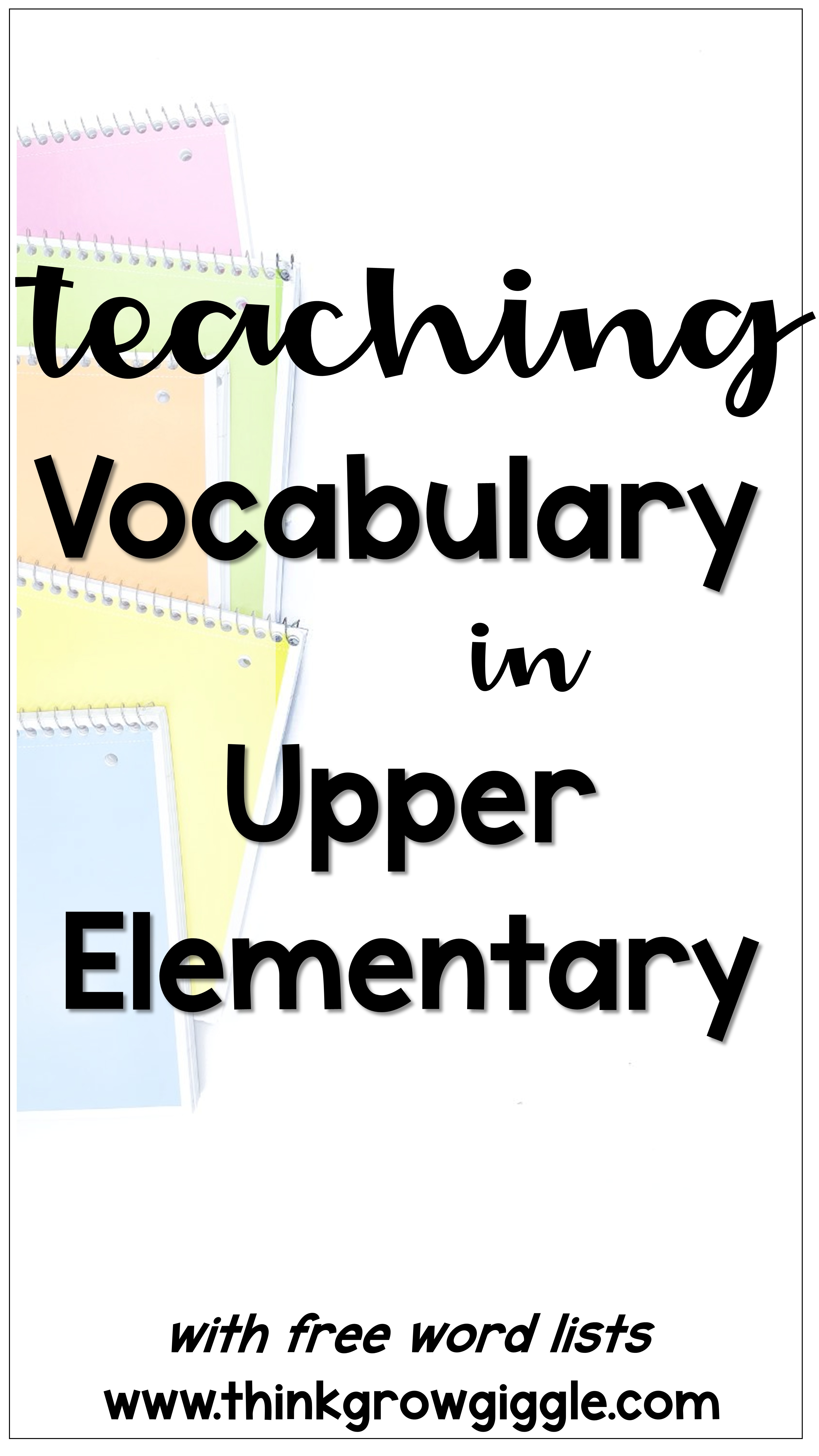If you have worked with small groups for
reading instruction in the last few years, you have probably noticed that lately you are spending more time preteaching vocabulary, explaining to students what words mean, and revisiting sections of the reading to clarify word meanings.
Students require explicit instruction in Tier 2 vocabulary because these words are essential for comprehending more complex texts across all subjects.
While Tier One words are basic and often learned through everyday conversation, Tier 2 words are academic and appear frequently in reading materials. These words are not as commonly used in daily speech. By directly teaching these words, we are giving students the tools to better comprehend what they are reading and express themselves more precisely in writing.

Why teach Tier 2 vocabulary?
When students have a strong vocabulary, they are better able to understand the texts that they read independently. Understanding the meaning of Tier 2 words enables them to grasp the content at a deeper level and engage with it more effectively.
2. Improves Communication Skills
We know, as teachers, that reading and writing go hand in hand. We expect students to write about what they read and discuss it as well. With an understanding of tier 2 vocabulary, students can express their thoughts and ideas about the books they read more clearly and effectively, both in writing and speaking.
3. Boosts Academic Performance
Research shows that vocabulary knowledge is linked to overall academic success. Students with a vast vocabulary tend to perform better across all subjects, including math and science, where understanding specific terminology is crucial. This is especially true when it comes to understanding academic vocabulary.
4. Builds Critical Thinking
Learning new words encourages students to think about language in new ways, fostering critical thinking skills as they analyze and apply new vocabulary in different contexts. When you implement a daily routine of direct Tier 2 vocabulary, students will read, draw, and write using that word repeatedly. Research shows that repetition is key! The more critical thinking tasks students do with the Tier 2 vocabulary words you bring to them, the more proficient they will become!
5. Increases Confidence
Knowing and using a wide range of words can boost students' confidence in their reading and writing abilities, making them more willing to participate in class discussions and engage with challenging material. As you make connections between the words you teach your students and your reading, writing, and content area lessons, the more students will recognize and be able to apply these words to their work and discussions.
With a broader vocabulary, students can write more clearly and effectively, using precise words to convey their ideas and emotions more effectively. This is true for both their written responses to the books they read and content activities, such as science experiment reflections, as well as creative and informative writing pieces. You will be wowed at how proficient the students become with using the Tier 2 vocabulary words you have taught them!
Get started with teaching your students tier 2 vocabulary with these easy-to-implement ideas and tips! Whether you are changing grade levels, new to teaching, starting a new year, or need a mid-year refresh, these teaching tips for
Tier 2 vocabulary instruction are just what you need to bring some rigor and critical thinking into your classroom!
1. Be Intentional with the Words You Pick
While we want to expand our upper elementary students' vocabulary, we do not want to introduce them to words that are out of their reach or that they will not encounter as readers. Appropriate vocabulary includes grade-level words and a challenge with slightly above-grade-level words. These words are the ones they will encounter in the books they read, the content lessons they are taught, and in everyday classroom activities.
Many teachers pull out testing academic vocabulary, teaching it separately. Academic vocabulary words are those that students need to know to respond to questions, take standardized tests, and complete projects.
2. Explicit Instruction with Word of the Week
Bringing a simple routine of vocabulary instruction into your classroom is a great way to ensure that you deliver instruction on Tier 2 words each day
. I like to have a word of the week that we practice throughout the week. This offers the kids repetitive activities to ensure mastery. Students read, write, discuss, and complete organizers, such as the Frayer Model, each day. By Friday, we will add the word to our vocabulary word wall, and the students are expected to use it.
I love using a word of the week to expand my kids' vocabulary! It is a much more authentic way of teaching vocabulary than skill and drill, as well as weekly tests.
Here is a quick overview of what the week looks like:
- Share the word of the day on the teaching slides.
- Discuss pronunciation, word parts, syllables, parts of speech, and meaning.
- An example sentence with a visual photo is shared.
- The students discuss the word with a partner.
- Each student gets a tri-fold of the word of the day.
- There is one activity for the focus word for every day of the week.
3. Teach Words in Context with Kid-Friendly Examples
Vocabulary words + definitions + weekly test does NOT equal success!
Go beyond just the word and definition with activities that include kid-friendly wording,
context, and examples. This will increase interest and motivation, making the words attainable for our upper elementary students. By using kid-friendly examples, students become confident that they can use that word as well!
4. Incorporate Visuals and Movement
Along with using kid-friendly examples, be sure to include visuals and movements for each word as well.
These word-of-the-week slides include a visual for each word. These visuals help students see the word in action and provide something to think about the next time they encounter that word while reading and engaging with class assignments.
Offering movement opportunities and gestures as you learn each word is another great way for students to remember the word. Try simply clapping as students spell each word, act out an action to represent that word, and ask students what movement the word brings to their minds. They always have amazing ideas to share!
5. Go Further with Word Walls or Student Notebooks
Two simple ways I like to keep the words alive and thriving are by using a
word wall and student notebooks or portfolios. The trifolds that I use for each word of the week are collected in student writing portfolios. This provides a valuable visual aid for writers to refer back to. We also collect the words we learn and glue them into our reading notebook. These words serve as a glossary for us as readers, too!
6. Make Connections to Reading and Writing
Making connections between reading vocabulary and student writing is one of the most effective ways to reinforce understanding and retention of Tier 2 words. In addition to introducing vocabulary words through a word-of-the-week approach, incorporate these words into your reading comprehension lessons and writing prompts. This helps students see the real purpose behind learning new words—they get to use them to express deeper thinking!
During reading groups or whole-class discussions, point out when a Tier 2 vocabulary word appears in the text or can be used to discuss the text. Encourage students to highlight or list vocabulary words they encounter in their independent reading, and challenge them to use these words in written responses or journal entries.
In writing lessons, provide students with opportunities to apply Tier 2 words in meaningful ways. For example, if the word of the week is reluctant, ask students to describe a time they felt reluctant or write a short story where a character shows reluctance. You can also create mini word challenges: “Use at least two of our vocabulary words in today’s paragraph!” This reinforces their understanding and encourages creative use of language.
👉Get started today, and grab the free word lists and Frayer Model graphic organizer below!
Tier 2 vocabulary instruction doesn’t have to be complicated or disconnected. When we teach with intention and provide students with numerous opportunities to interact with new words through reading, writing, visuals, movement, and discussion, we lay the foundation for stronger comprehension, clearer writing, and confident communication. With the right tools and routines, you will be amazed at how your students grow as readers and writers this year!
You will love reading:
Grab the Word of the Week Routine and
be set for the school year!
✅Grade 5
✅Grade 6
LOVE these ideas? Pin to save!
*affiliate links: “Think Grow Giggle is a participant in the Amazon Services LLC Associates Program, an affiliate advertising program designed to provide a means for sites to earn advertising fees by advertising and linking to Amazon.” (source: Section 5)
loading..





















